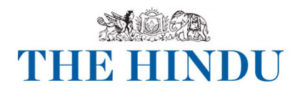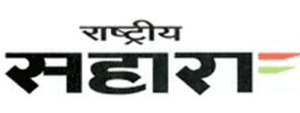
27-10-2016 (Important News Clippings)
To Download Click Here
Miles To Go
With India’s ease of doing business rank moving up just one spot, reality bites
Prime Minister Narendra Modi had set a target of improving India’s ranking on the World Bank’s ease of doing business rankings to 50th by next year. Given that it has moved up only one spot this year, from 131st to 130th among 190 countries studied, it’s a foregone conclusion now that India will fail to meet this target. This calls for soul-searching on the part of the government.
Having accepted the target of being among the top 50 nations in ease of doing business it’s too late to nitpick now, as the ministry of commerce and industry has been reduced to doing, about the World Bank’s methodology in arriving at the rankings. Modi made the right move in setting up this target, but his government hasn’t done nearly enough to achieve it. Some regulatory changes such as the new insolvency code will eventually improve India’s ranking. But the key is to get them to work on the ground as a country’s score is based on a survey of local professionals such as lawyers and accountants. For instance, in resolving insolvency the recovery rate in India is just 26 cents on the dollar. India’s banks must be envious of their Pakistani counterparts as the recovery rate there is 43 cents on the dollar, while Norway recovers 92.9 cents.
Ease of doing business requires, apart from legislative changes, efficiency improvements across the bureaucracy and judicial system. The government has said that reforms undertaken in the last year have not been factored into the report, but it’s noteworthy that India is the only country for which the report has a box dedicated to ongoing economic reforms. Clearly it isn’t impressed with results so far: among other things, lack of labour law reform has been flagged. Reforms shouldn’t just be about a dialogue between government and big business, the interests of medium and small enterprises must also be factored in. In that respect it’s significant that with respect to starting a business, India’s rank has slipped four places to 155th.
Large areas of the economy, such as agriculture, retail and education, remain untouched by significant reform. The last NDA government made large strides in privatising loss-making public sector enterprises, but this NDA government hasn’t been keen to emulate its predecessor. The Modi government must persevere and double up on its efforts to reform the economy.
Let’s not obsess about doing business rankings
India has managed to move up by just one notch to 130th in the World Bank’s latest Doing Business rankings. The rankings matter only because the government chose to make them a yardstick of the governance improvement it achieves. Otherwise, the rankings both understate problems and overstate them. Focusing on just Delhi and Mumbai, India’s indices understate the problem in smaller towns. The setting up of new kinds of banks and the ongoing data revolution that would truly democratise access to formal finance have been ignored in the ranking, overstating the problem. More fundamentally, many of the factors that are taken for granted in advanced industrial countries just do not exist in India: urban spaces into which industry can just move in, stable power supply, a culture of trust. It is not so much ease of enforcing a contract as the absence of the need to enforce a contract that makes businesses thrive.
Of the 10 parameters, India’s rank has worsened in five and remained unchanged in three. India has slid in paying taxes and getting credit, and remains static in registering property. The Centre and states must swiftly adopt the goods and services tax and ensure efficient post-filing procedures to lower compliance costs. Ditto for the enforcement of the bankruptcy code for resolution of bad loans. The country also needs a Torrens system of registering land, in which for every piece of land, the owner’s name is entered in a registry that is maintained and guaranteed by the government to end title disputes. The government must stop seeing trade facilitation at the WTO as a sacrifice that should be made only in return for reciprocal concession. A culture of corruption mediates doing business but that can go only when political funding turns transparent.
On enforcing contracts, the country’s ranking is a lowly 172, despite a marginal improvement from last year. We need comprehensive judicial reform that entails vastly increasing the number of judges, procedural reform and use of information technology to speed up the judicial process. It is a long haul that has not place for quick fixes.
रोजगार में बेहतरी के लिए उच्च शिक्षा में हो सुधार
अपने स्नातकों को रोजगार सक्षम बनाने के लिए हमें कई कदम उठाने होंगे। इसमें विद्यालयों में सुधार से लेकर दूरवर्ती शिक्षा के प्रति भेदभाव खत्म करने जैसी बातें शामिल हैं। बता रहे हैं मनीष सबरवाल और अशोक रेड्डी

Playing on geopolitical chessboards
Changes, if any, to redefine Indian foreign policy must not take place in an episodic manner, or as a series of isolated steps

International diplomacy is hardly a ‘zero-sum game’. It has become even more complicated with the passage of time. Hence, giving a new direction to the country’s foreign policy demands careful consideration and assessment of all relevant aspects. Systemic, national and decision-making factors must determine foreign policy choices. Maintaining coherence and balance is also a vital aspect. It would seem, however, that this kind of exercise has yet to be undertaken, even as shifts in policy have been effected.
Among the acronyms
One indication of this would seem to be India’s current approach towards different multilateral organisations and plurilateral groupings. Many are better known by their acronyms such as NAM, SAARC, BRICS, BIMSTEC, etc. Multilateral fora have today become indispensable to the conduct of international diplomacy, and how a nation deals with, or adjusts to, the alphabetic soup of organisations that exist is important. This is so even if a case exists that some of the older ones have lost much of their relevance.
Since Independence, India has played a leading role in multilateral fora. It was a founder member of NAM (Non Aligned Movement), SAARC (South Asian Association for Regional Cooperation), BIMSTEC (Bay of Bengal Initiative for Multi-Sectoral Technical and Economic Cooperation), BRICS (Brazil, Russia, India, China and South Africa), and BCIM (Bangladesh, China, India and Myanmar). India has sought membership of the NSG (Nuclear Suppliers Group) and the Wassenaar Arrangement (on Export Controls for Conventional Arms and Dual-use Goods and Technologies) and also full membership of ASEAN (Association of Southeast Asian Nations), the SCO (Shanghai Cooperation Organisation), etc, recognising the potential of being inside rather than outside such bodies. Even granting that the world is increasingly tilting towards the post-modern phenomenon of transactional politics, and that older institutions such as NAM are increasingly out of sync with this, a proper study of the utility of participation in such fora — prior to treating many of them as of little consequence — would have been useful. To optimise its many advantages, India clearly needs to play on as many geopolitical chessboards as possible.
NAM may be a pale shadow of what it was during an earlier period when towering personalities such as Nehru, Tito, Nasser and Castro dominated its proceedings. With non-alignment giving way to strategic alignment, organisations such as NAM may seem anachronistic, but it should not be lost sight of that it still resonates with many Third World countries. It also offers an alternative platform for putting forward a different viewpoint. It would, hence, be premature to pronounce the death of NAM. The Indian Prime Minister’s decision to skip the NAM Summit in Venezuela may well hasten its end, but does not take away from the fact that NAM still has some relevance and India could still utilise NAM — perhaps less ideological but more purposive than in the past — to counter newer challenges such as China’s not so ‘peaceful rise’.
SAARC is still relevant
India’s stakes in SAARC are, if anything, higher. It is the most important country in South Asia, and India was the progenitor of the idea of a primarily economic grouping of countries of South Asia. Admittedly, SAARC has been on ‘life-support’ for much of the period, but had begun to display a new vigour and dynamism of late. India had also shown a willingness to adopt an asymmetrical and non-reciprocal approach towards other SAARC members which had gone down well with these countries. To undermine SAARC due to the ongoing conflict between India and Pakistan may well be an instance of ‘throwing the baby out with the bathwater’.
Propping up bodies such as BIMSTEC and BCIM in place of SAARC is hardly the answer, and could even prove counterproductive. The China factor is all too predominant here, with almost every country (other than India) under China’s thrall, having been assiduously wooed with financial and other inducements. China is hoping to further consolidate its position through its One Belt, One Road initiative which has been warmly welcomed by all these countries, the sole exception again being India.
In the case of BRICS, the weakening of the so-called strategic triangle between Russia, China and India does affect its image. The diminishing economic fortunes of Russia, Brazil and South Africa, of late, have also dented its image as a flag-bearer of newly emerging economies. Still, the idea of BRICS remains valid though it will require hard work and skilful diplomacy to reproduce the previous elan, and avert a pincer move against India by Russia and China as they move closer strategically and economically.
Changing ties
Undoubtedly, India’s foreign policy has to evolve in keeping with the changes and shifts taking place across the globe. Permanence in relations, and consistency in alignments, is not a signal virtue in the world of the 21st century. Not all relationships can or should be regarded as cast in stone, and impervious to change. This applies equally to ideologies. Nevertheless changes, if any, must not take place in an episodic manner, or as a series of isolated steps.
For instance, India-U.S. relations today are at an all-time high. This was hardly the case a decade and a half ago. On the other hand, the ‘all weather’ India-Russia relationship is today nowhere at the same level as it was even a few years back. Notwithstanding the rhetoric from Goa, Russia can hardly be viewed as a strategic ally as of now. Russia may have been restored to the position of ‘the most favoured defence supplier’, but this is a far cry from being a strategic ally. India may be only partly to blame for this, as Russia has been looking at diversifying its options for some time. It had moved closer to China and has achieved a degree of strategic congruence to counter U.S. moves in Asia.
The China, Russia and India triangle thus heralds a situation where two sides, China and Russia, have grown much closer to each other, with India in danger of losing out in this process. The China-Russia Comprehensive Strategic Partnership of Coordination, as also the recent Russia-Pakistan military exercises, even though on a limited scale and a subtext of this, only demonstrate the growing strategic ambiguity in our neighbourhood and in Asia as a whole.
On the sidelines of the March
It is China that will demand India’s wholehearted attention. Chinese President Xi Jinping’s recent reference to a ‘new Long March’ is not without significance. China’s ‘not so peaceful rise’, alongside its growing economic and military muscle, its growing strategic congruence with Russia, and a further tightening of its links with Pakistan pose a pre-eminent challenge for India in the competition of influence in the region and beyond. It may have other graver implications as well. The One Belt, One Road initiative and the new Maritime Silk Route/Road also have the potential to bottle up India and Indian initiatives in Asia.
As India aspires to become a leading power, these are real matters for contemplation and action. It would be a mistake if India were to fritter away its energies by viewing regional and world developments through a very narrow prism, viz., terrorism. There are far bigger and larger issues at stake that demand attention. Most important would be highlighting India’s capabilities to accelerate economic growth during a period which marks the demise of globalisation. India could also bring to the attention of the rest of the world its tremendous ‘human assets’ that can power the country as the world transits to an incredible future, viz., the era of the Fourth Industrial Revolution.
M.K. Narayanan is a former National Security Adviser and former Governor of West Bengal.
नाम से परहेज क्यों?
सुप्रीम कोर्ट की सरकारी बैंकों के डूबत कर्ज या गैर-निष्पादित संपत्ति (एनपीए) पर नई टिप्पणी की वजह समझ से परे नहीं है। सर्वोच्च अदालत उन लोगों के नाम जाहिर करने को कह रही है, जिनके नाम हजारों करोड़ रुपये बकाया है। भारतीय रिजर्व बैंक की दलील है कि संबंधित कानून के तहत नाम गोपनीय रखना मजबूरी है। लेकिन प्रधान न्यायाधीश टी.एस. ठाकुर की अगुआई वाली तीन सदस्यीय पीठ ने सीलबंद लिफाफे में मुहैया कराए गए ब्योरे जाहिर कर दिए। इस ब्योरे के मुताबिक 87 लोगों के पास 85,000 करोड़ रुपये बकाया हैं। यह इतनी बड़ी रकम है कि इसे नजरअंदाज नहीं किया जा सकता। कुल एनपीए की रकम तो शायद इससे भी बड़ी लाखों करोड़ में बताई जाती है। दरअसल, एनपीए का मामला इतना बड़ा हो गया है कि इसका अर्थव्यवस्था पर काफी गहरा असर हो रहा है। इसके अलावा, यह सार्वजनिक पैसे का भारी दुरुपयोग भी है। पिछले कई साल से उत्पादन क्षेत्र में गिरावट में इसे भी एक वजह माना जा रहा है। सरकारी बैंक इस डूबत कर्ज यानी न अदा किया जाने वाले कुछ लाख करोड़ रुपये के निकल जाने से तबाह होने की कगार पर पहुंच गए हैं। पिछले आरबीआई गवर्नर रघुराम राजन के कार्यकाल में बैंकों से कर्ज देने के नियमों को कड़ा करने को कहा गया। राजन ने ही डूबत खाते के मामले पर जोर देने की नीति बनाई। उनके इस कदम से यह हुआ कि बैंकों से नई परियोजनाओं को कर्ज मिलने पर सख्ती हो गई। इसका सीधा असर उत्पादन में गिरावट के तौर पर दिखा। उत्पादन क्षेत्र में गिरावट की वजह से रोजगार के बाजार में आई मंदी से निजात दिलाने के लिए केंद्र सरकार बैंकों से कर्ज पर सख्ती खत्म करने को कहती रही है। नए आरबीआई गवर्नर उर्जित पटेल के कार्यभार संभालने के बाद एक अवधारणा यह भी आगे बढ़ाई जा रही है कि एक ‘‘बैड बैंक’ तैयार किया जाए यानी डूबत कर्ज की रकम को एक अलग खाते रखा जाए, ताकि बैंक के कार्यकलाप में वह आड़े न आए। इसका मकसद मोटे तौर पर यह लगता है कि डूबत कर्ज को अलग रखकर नई परियोजनाओं के लिए कर्ज देने पर सख्ती को दूर किया जा सके। सरकार की दिक्कत शायद यह है कि इन बड़े कर्जदारों के नाम उजागर कर देने से अर्थव्यवस्था में कहीं और गिरावट न दिखने लगे। मगर प्रधान न्यायाधीश का तर्क है कि इससे उन्हें डरना चाहिए, जो सार्वजनिक पैसे नहीं चुका रहे हैं।
मंदी से निपटने को कितने तैयार हैं आप
साल 2017 का आर्थिक पूर्वानुमान वैश्विक अर्थव्यवस्था की कमियां तो बता ही रहा है, कई मुल्कों में उम्मीद से कम विकास की तस्वीर भी दिखा रहा है। जाहिर है, मुश्किलें कई हैं, जैसे यूरोप के बैंकों की खस्ता हालत, चीन के प्रॉपर्टी बाजार में उथल-पुथल, पश्चिमी देशों में राजनीतिक अस्थिरता और यूनान व पुर्तगाल जैसे देशों की खराब आर्थिक सेहत। अंदेशा यह है कि प्रमुख तेल बाजारों में उठा-पटक के कारण कच्चे तेल की कीमतों में वृद्धि हो सकती है। असल में, दिक्कत यह है कि सरकारें आने वाली मंदी से लड़ने को तैयार नहीं दिख रहीं।
इसकी वजह है, लंबे समय से दिए जा रहे अभूतपूर्व मौद्रिक प्रोत्साहन और सार्वजनिक कर्ज का भारी बोझ। इसमें दोराय नहीं कि यह पिछली मंदी की तरह हमें ज्यादा चोट नहीं पहुंचाएगी, मगर मेरा मानना है कि मौद्रिक नीति यदि दुरुस्त की जाए व राजकोषीय हालत सुधार ली जाए, तो विकसित अर्थव्यवस्थाएं कहीं बेहतर तरीके से मंदी से लड़ सकेंगी।अभी जो वैश्विक तस्वीर उभर रही है, वह काफी उथल-पुथल वाली है। अमेरिका में बेरोजगारी दर करीब पांच फीसदी है और वहां का केंद्रीय बैंक फेडरल रिजर्व दिसंबर में फिर से ब्याज दर बढ़ा सकता है। मगर फेडरल रिजर्व की रफ्तार काफी सुस्त दिख रही है। यूरोपीय सेंट्रल बैंक भी बांड खरीदने की अपनी पहल तेज करने वाला है, मगर यूरोजोन में बेरोजगारी की दर का दस फीसदी बने रहना उसकी नीतियों पर सवाल उठाने को काफी है। वहीं, बैंक ऑफ जापान महंगाई दर बढ़ाने और विकास दर तेज करने की जद्दोजहद में जुटा है, जो निम्न स्तर पर हैं।
विकसित अर्थव्यवस्थाएं इसलिए जूझ रही हैं, क्योंकि नीति-नियंता संरचनात्मक सुधारों को लागू करने में विफल रहे हैं। वे न तो पेंशन में वृद्धि रोक पाए, न विकास की राह रोकने वाले करों में सुधार कर पाए और न श्रम बाजारों को उदार बना पाए। नतीजतन, केंद्रीय बैंकों पर बोझ काफी ज्यादा बढ़ गया है। ऐसे में, सरकारों को फिलहाल करों में कटौती करनी चाहिए और उन योजनाओं पर खर्च घटाना चाहिए, जिनसे उन्हें आने वाले दिनों में लाभ का अनुमान हो।
हमें यह समझना होगा कि किसी भी अर्थव्यवस्था में प्रोत्साहन कार्यक्रम उचित जांच-पड़ताल और तेजी से लागू किए जाने चाहिए। साथ ही, आर्थिक खतरों को न्यूनतम करने के लिए सरकारों के तात्कालिक खर्चों को नियमित तौर पर उस प्रक्रिया से जोड़ना चाहिए, जो राजकोषीय घाटे को कम करने के लिए उठाई जाती है। इतिहास और तमाम आर्थिक सिद्धांत यही बताते हैं कि वित्तीय समेकन भविष्य के खर्चों को कम करके किए जाने चाहिए, खासकर हस्तांतरण-भुगतान में। अगर आर्थिक नीति तय करने वाले लोग इस पर ध्यान देते हैं, तो वे अपने मुल्क को मजबूत बना सकेंगे। नहीं तो, जरूरत के वक्त उनका हाथ थामने वाला कोई नहीं होगा।
साभार- द गार्जियन (ये लेखक के अपने विचार हैं)
नाहक एतराज
भारत में अमेरिका के राजदूत रिचर्ड वर्मा के अरुणाचल प्रदेश जाने पर चीन के आपत्ति करने का कोई औचित्य नहीं है। दरअसल, यह एतराज चीन ने इसलिए किया है ताकि वह दुनिया को बताता रहे कि अरुणाचल प्रदेश विवादित क्षेत्र है। चीन की इस प्रतिक्रिया पर भारतीय विदेश मंत्रालय ने उचित ही, दो टूक जवाब दिया है। जवाब में मंत्रालय ने कहा कि अरुणाचल प्रदेश भारत का अभिन्न हिस्सा है और वहां दौरे के लिए अमेरिकी राजदूत को भारत सरकार ने अनुमति दी थी। गौरतलब है कि रिचर्ड वर्मा अरुणाचल प्रदेश के मुख्यमंत्री पेमा खांडू के निमंत्रण पर बाईस अक्तूबर को तवांग गए थे और वहां उन्होंने एक समारोह में हिस्सा लिया था। फिर वर्मा ने अपने इस दौरे की तस्वीरें ट्विटर पर साझा की थीं। ये तस्वीरें सार्वजनिक होते ही चीन बिफर पड़ा।
उसने अमेरिकी राजदूत के अरुणाचल जाने को भारत के साथ सीमा विवाद में अमेरिकी दखलंदाजी करार देते हुए कहा है कि इसके बुरे नतीजे हो सकते हैं, इससे मुश्किल से सीमा पर कायम हुई स्थिरता और शांति भंग हो सकती है। लेकिन अमेरिकी राजदूत ही क्यों, चीन को तो भारत के प्रधानमंत्री, राष्ट्रपति और अन्य अतिविशिष्ट व्यक्तियों का भी अरुणाचल का दौरा करना खटकता रहा है। मसलन, पिछले साल फरवरी में उसने प्रधानमंत्री नरेंद्र मोदी के अरुणाचल दौरे पर नाराजगी जताई थी। लेकिन चीन की ताजा प्रतिक्रिया, जिसमें उसने सीमा पर शांति भंग की धमकी दी है, पहले से कहीं ज्यादा तीखी है और इसके पीछे सीमा विवाद की पृष्ठभूमि के अलावा पिछले दिनों दोनों देशों के रिश्तों में आई तल्खी भी एक वजह हो सकती है। दोनों देशों की सीमा से सटे नब्बे हजार वर्ग किलोमीटर के इलाके पर चीन अपना दावा जताता है, जिसका अधिकांश हिस्सा अरुणाचल प्रदेश का है। दूसरी ओर, भारत का कहना है कि विवाद अड़तीस हजार वर्ग किलोमीटर के अक्साइ चिन को लेकर है, जिस पर चीन ने 1962 में कब्जा कर लिया था।
सीमा विवाद को सुलझाने के लिए दोनों देशों के बीच उन्नीस दौर की वार्ता हो चुकी है, पर नतीजा सिफर रहा है। हल निकलने की अभी कोई उम्मीद भी नहीं दिखती। सीमा विवाद संबंधी बातचीत को आगे बढ़ाने के लिए एक सैद्धांतिक ढांचे पर सहमति बनी थी और कुछ मानक तय हुए थे। इसमें यह तय हुआ था कि सीमा पर शांति बनाए रखी जाएगी और गलतफहमी या किसी शिकायत की सूरत में दूसरे पक्ष से संपर्क स्थापित कर मामले को सुलटा लिया जाएगा। लेकिन चीनी सैनिकों का कई बार का अतिक्रमण बताता है कि चीन ने इस सैद्धांतिक सहमति को अपेक्षित गंभीरता से नहीं लिया। ऐसे में सीमा विवाद पर होने वाली बैठकें एक औपचारिक कवायद होकर रह गई हैं। क्या पता, कभी चीन में ऐसा नेतृत्व आए जो विस्तारवादी रुख से अलग हट कर सोचे, तो समाधान निकलना मुश्किल नहीं होगा। मगर सीमा पर शांति तो बनी ही रहनी चाहिए। सैद्धांतिक सहमति का एक अहम बिंदु यह भी था कि सीमा विवाद को सुलझाने में स्थानीय आबादी की आकांक्षा को ध्यान में रखा जाएगा। इस कोण से भी भारत का दावा अकाट्य ठहरता है। लेकिन अरुणाचल को लेकर भले चीन यह जरूरी समझता हो कि भारत की दावेदारी पर सवाल उठाते रहा जाए, मगर सीमा पर शांति भंग की चेतावनी देना एक उकसाने वाला जवाब है और उसे ऐसी प्रतिक्रिया से बाज आना चाहिए।




